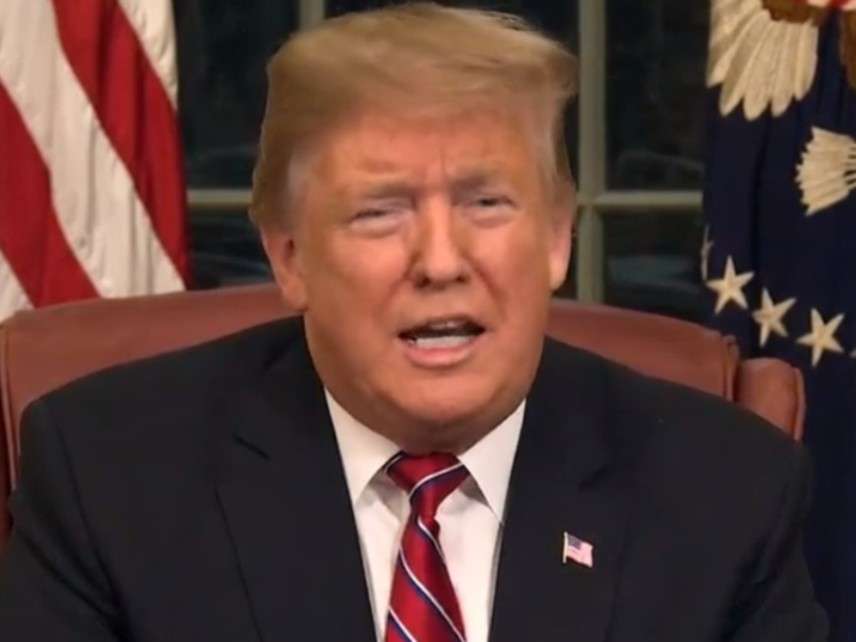Why Drug Traffickers Laugh at Trump's Border Wall
The profit incentives created by prohibition doom any effort to block the drug "pipeline."

"Our southern border is a pipeline for vast quantities of illegal drugs," Donald Trump said last night while touting the merits of the "big, beautiful wall" he wants to build along the border with Mexico. The border, of course, is not a pipeline, even metaphorically. The pipeline is the route by which illegal drugs cross the border, and here is where the president runs into practical as well as semantical difficulty.
First of all, as Joe Setyon noted last night, illegal drugs that enter the country from Mexico are mainly smuggled through ports of entry, which would still exist no matter how much money the government spends on physical barriers. In 2017, according to the Drug Enforcement Administration (DEA), only "a small percentage of all heroin seized by [Customs and Border Protection] along the land border was between Ports of Entry." The vast majority is carried through ports of entry by privately owned vehicles or commercial tractor trailers.
The DEA says illicit fentanyl enters the United States largely (maybe mostly, once you take purity into account) in packages delivered by mail or private courier services, either directly or through Canada. Nearly all of the fentanyl seized at the southern border in 2017 was coming in through ports of entry. The picture is similar for cocaine and methamphetamine, the two other drugs that Trump mentioned: The vast majority of the supply would be unaffected by a wall.
The pipeline metaphor is misleading because it invites us to imagine a single flow of drugs that could be blocked if only the government devoted sufficient resources to the effort. But drug traffickers react to enforcement efforts, and if one route becomes relatively perilous they can always switch to another. As Theresa Cardinal Brown explained in the May 2017 issue of Reason, "drug smugglers have already beaten Trump's wall" through a variety of evasive maneuvers. Those include not just hiding drugs inside vehicles going through the wall at points of entry (the currently preferred method) but also using tunnels to carry drugs under the wall, flying or catapulting drugs over the wall, and transporting drugs around the wall on boats and submarines. Thanks to prohibition, Brown notes, "the profit incentives to find ways over, under, around, or through any border infrastructure are high, and the cartels have more than enough money to spend on R&D."
That profit incentive—the huge "risk premium" that criminals can earn by producing, transporting, and selling illegal drugs—is the most fundamental problem with Trump's fantasy of stopping drugs at the border, whether with a wall or with any other conceivable method. "Traffickers can typically purchase a kilogram of fentanyl powder for a few thousand dollars from a Chinese supplier," the DEA says, "transform it into hundreds of thousands of pills, and sell the counterfeit pills for millions of dollars in profit." Taking the average of two actual sales cited by the DEA, a kilogram of fentanyl that costs $2,600 can be pressed into 666,666 fake pain pills, each containing 1.5 milligrams of the active ingredient, generating about $10 million in revenue at $15 each.
No feasible amount of interdiction will stop people from taking advantage of a business opportunity like that, although increased enforcement may push traffickers toward more potent drugs, as illustrated by the shift from diverted prescription pain pills to heroin, from heroin to fentanyl, and from fentanyl to fentanyl analogs. Each of those steps reduces risks for smugglers and increases profits, but it also magnifies the dangers that consumers face by making potency more variable and less predictable. The government's efforts to block the "pipeline" cannot stop drug use, but they can make it deadlier.




Show Comments (240)